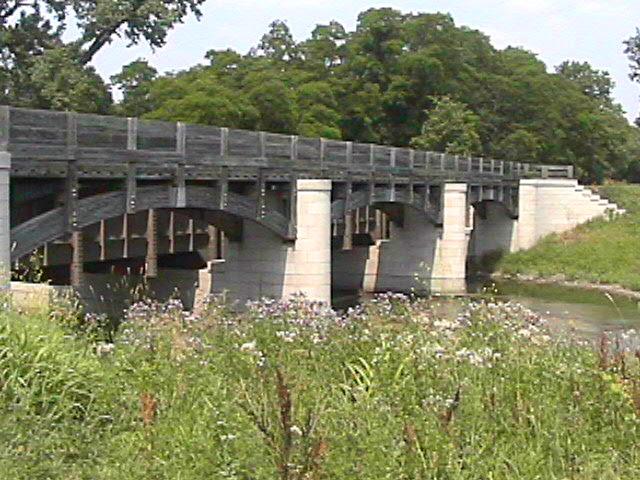To provide observations and information on the emerging fields of landscape scale conservation, heritage preservation, and sustainable community development.
Newsletter
Stay up-to-date with the latest nature, culture and community news.
We won’t spam you or share your information. Newsletters are sent approximately 10 times a year. Unsubscribe at any time.

National Heritage Areas Deliver Place-Based Education
The thirtieth anniversary of the first National Heritage Area (NHA) and the upcoming centennial of the National Park Service (NPS), inspired research into the relatively untapped topic of the mutual benefits to both NHAs and the NPS. Recent research has explored how NHAs deliver place-based educational programming in partnership with nearby national park units.

The National Park Service Brand: Do I have a Franchising Opportunity for You!
Over the last year the George Wright Journal has been running a series of Centennial Essays reflecting varying perspectives on the future of the National Park Service. The most recent piece by Holly Fretwell, a research fellow at the Property and Environment Research Center (PERC) in Bozeman, Montana, offers some new ideas.

National Heritage Areas at Thirty: Help tell the Story
2014 marks the 30th anniversary of the National Heritage Areas program. Conceived as a way to cross the culture – nature divide, heritage areas stretch beyond political boundaries to tell landscape scale histories and protect regional environmental resources. The areas tell stories that are too big, too gritty, too alive and too expensive to be confined within a traditional national park unit. Yet, heritage areas have been consistently hammered by shrinking federal budgets, questions about the proper role of government, and even their right to exist. Read more about how the LLO plans to mark this important anniversary.

Blackstone River Valley: Sounding a Retreat from Landscape Scale Work?
Not so long ago the Blackstone River Valley National Heritage Corridor was the pride of the National Park Service (NPS), exemplary of the agency’s new approach to managing living landscapes. But somewhere along the way, the NPS changed direction. A Special Resource Study, for example, rejected the continuation of the heritage commission, instead recommending the creation a far more traditional national park. What is going on with this once exemplary partnership model?

#NHA30: Tales from the Towpaths
National Heritage Areas are conserving roughly a 1,000 miles of canal corridors across the country. These historic waterways and towpaths are becoming tomorrow’s network of trails and blue ways, connecting population centers to parks and historical sites of national, state, and local importance. Find out more the partnership model of management and the entrepreneurial strategies key to NHA success in this guess post.

National Heritage Areas Deliver Place-Based Education
The thirtieth anniversary of the first National Heritage Area (NHA) and the upcoming centennial of the National Park Service (NPS), inspired research into the relatively untapped topic of the mutual benefits to both NHAs and the NPS. Recent research has explored how NHAs deliver place-based educational programming in partnership with nearby national park units.

The National Park Service Brand: Do I have a Franchising Opportunity for You!
Over the last year the George Wright Journal has been running a series of Centennial Essays reflecting varying perspectives on the future of the National Park Service. The most recent piece by Holly Fretwell, a research fellow at the Property and Environment Research Center (PERC) in Bozeman, Montana, offers some new ideas.

National Heritage Areas at Thirty: Help tell the Story
2014 marks the 30th anniversary of the National Heritage Areas program. Conceived as a way to cross the culture – nature divide, heritage areas stretch beyond political boundaries to tell landscape scale histories and protect regional environmental resources. The areas tell stories that are too big, too gritty, too alive and too expensive to be confined within a traditional national park unit. Yet, heritage areas have been consistently hammered by shrinking federal budgets, questions about the proper role of government, and even their right to exist. Read more about how the LLO plans to mark this important anniversary.

Blackstone River Valley: Sounding a Retreat from Landscape Scale Work?
Not so long ago the Blackstone River Valley National Heritage Corridor was the pride of the National Park Service (NPS), exemplary of the agency’s new approach to managing living landscapes. But somewhere along the way, the NPS changed direction. A Special Resource Study, for example, rejected the continuation of the heritage commission, instead recommending the creation a far more traditional national park. What is going on with this once exemplary partnership model?

#NHA30: Tales from the Towpaths
National Heritage Areas are conserving roughly a 1,000 miles of canal corridors across the country. These historic waterways and towpaths are becoming tomorrow’s network of trails and blue ways, connecting population centers to parks and historical sites of national, state, and local importance. Find out more the partnership model of management and the entrepreneurial strategies key to NHA success in this guess post.


